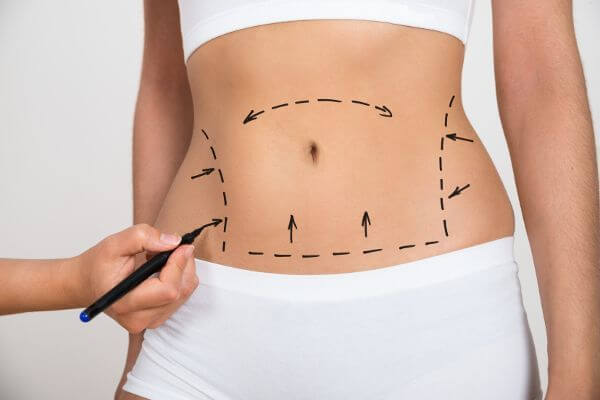This surgery is recommended when the abdominal skin is stretching and loose and the stomach is “hanging”. “Large” pregnancy, twin pregnancy or significant weight loss may result in loose tissues. Sometimes severe obesity results in sagging, even without weight loss. There are different stages of this condition. Sometimes only wrinkles around or below the belly button cause aesthetical discomfort. In more severe cases, the excess skin of the lower abdomen hangs loose in front of the mons pubis, like an apron.

Abdominal muscle separation in the midline of the abdomen, which is similar to hernia, often occurs together with the loosening of the skin. Restoration of abdominal muscle separation may be carried out during the abdominoplasty procedure too. In addition, the tightening of the abdominal wall in its midline may result in a slimmer waistline.
Abdominoplasty has different degrees: mini, midi and full abdominoplasty. Obviously, mini abdominoplasty is the smallest surgical intervention, when only the excess skin of the lower abdomen is removed. During full abdominoplasty we mobilise the skin of the whole abdominal wall, and after removing the excess skin from the lower abdomen, we stretch the skin out on the abdomen.
The surgery is generally performed under general or epidural anaesthesia. Starting out from the incision on the lower abdomen, we dissect the abdominal skin incising around the belly button if needed. The excess skin is removed, the abdominal wall is stitched up in the middle and the stretched skin is stitched to the lower abdomen. If the belly button was incised, we stitch it to its new place. After an abdominoplasty one or two drain tubes are always needed, which lead the serum or blood out which accumulate under the skin. These can be removed after one or two days. After the surgery, at least one or two days of hospitalization is necessary. Supportive abdominal binder or an abdominoplasty dressing is recommended for 6 weeks. It is especially important after the stitching up of the abdominal wall, as it relieves the stitches until inner scarring starts. The stitches are usually removed after two weeks.
In view of the above, abdominoplasty can be an intervention of different degrees of severity. Therefore, the price of the surgery varies widely too. The need for a large surgical team, general anaesthesia or some nights of hospitalisation makes this surgical intervention one of the more expensive plastic surgeries. Look for approximate prices here.
| Type of surgery | min. (€) | max. (€) |
|---|---|---|
| Abdominoplasty | 1500.- | 3500.- |